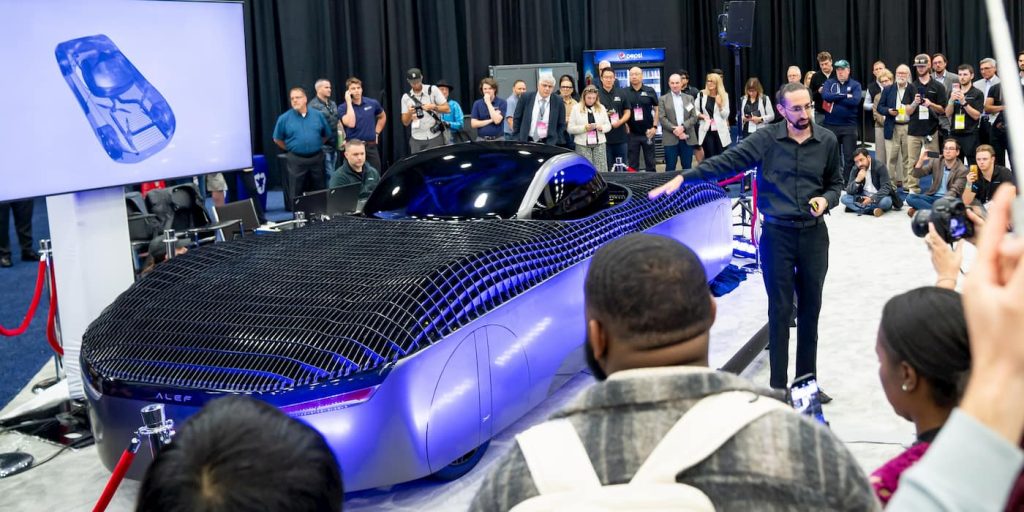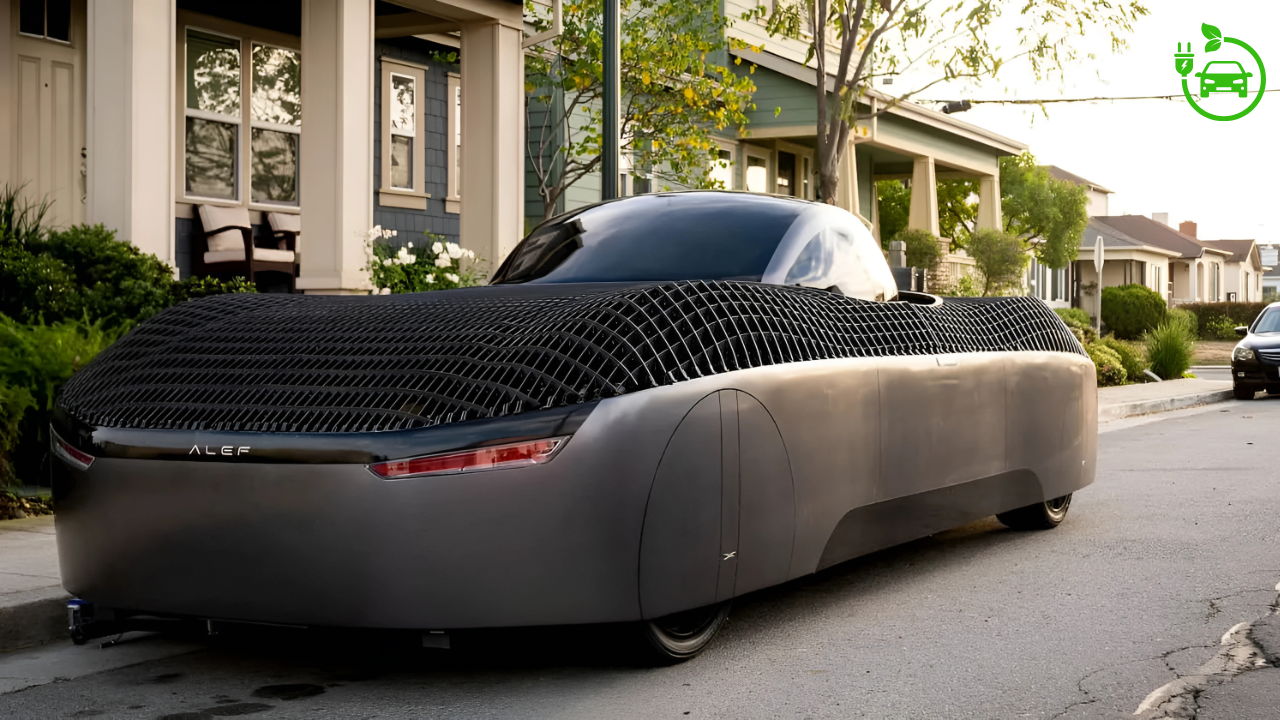The dream of soaring above traffic jams while driving to work is no longer confined to science fiction movies. A California-based company is preparing to make this fantasy a tangible reality before 2026 arrives. What was once considered impossible is now entering the final stages of development, promising to revolutionize how we think about personal transportation. electric flying car from Alef Aeronautics nears 2025 launch with 220-mile range, road-legal design, and energy efficiency claims.
Also Read:- Australia First Flying Car Launches Preorders Now Open
The Dawn of Practical Aerial Mobility
Imagine stepping into your garage, starting your vehicle, and choosing between driving on conventional roads or taking to the skies to bypass congested highways. This scenario is rapidly approaching reality thanks to innovative engineering and determination from Alef Aeronautics, a San Mateo-based startup that has spent nearly a decade perfecting their vision.

The company’s flagship creation represents more than just another experimental aircraft. It embodies a fundamental shift in transportation philosophy, combining the practicality of road vehicles with the freedom of flight. Unlike previous attempts that resembled drones with wheels hastily attached, this development prioritizes genuine dual-functionality without compromising either capability.
Technical Innovation Meets Market Demand
The engineering challenges faced in creating a viable flying car are immense. Traditional aircraft design principles must be balanced with automotive safety standards, while ensuring the final product remains accessible to everyday consumers. The team has tackled these obstacles through years of iterative design and testing.
Early prototypes revealed the complexity of achieving true dual-mode transportation. The propulsion system needed to provide sufficient lift for vertical takeoff while remaining compact enough for road use. Battery technology had to deliver extended range without creating prohibitive weight penalties. Control systems required intuitive operation for users accustomed to conventional vehicles.

Model A Specifications and Capabilities
The flagship vehicle showcases impressive performance metrics that address practical transportation needs. Its design philosophy centers on creating a seamless transition between terrestrial and aerial modes of operation.
Performance Specifications
| Specification | Value |
|---|---|
| Total Range | 220 miles |
| Flight Range | 110 miles |
| Power Source | 100% Electric |
| Vehicle Type | Ultralight Classification |
| Takeoff Method | Vertical (VTOL) |
| Road Legal Status | FAA Approved |
| Operating Hours | Daylight Only |
| Passenger Capacity | Personal Transport |
Energy Efficiency Comparison
| Vehicle Type | Energy Consumption | Efficiency Rating |
|---|---|---|
| Model A Flying Car | Lower than Tesla | Superior |
| Traditional EVs | Baseline Standard | Standard |
| Conventional Aircraft | Significantly Higher | Inferior |
| Hybrid Vehicles | Higher than Electric | Below Standard |
The remarkable claim of superior energy efficiency compared to leading electric vehicles stems from the vehicle’s optimized design and advanced propulsion technology. This achievement represents a significant breakthrough in sustainable transportation.
Market Response and Commercial Viability
Consumer enthusiasm has exceeded all expectations since the initial announcement. The reservation system launched with modest expectations but quickly revealed substantial market appetite for revolutionary transportation solutions.
Pre-Order Success Metrics
The overwhelming response demonstrates genuine consumer interest beyond mere curiosity. Initial reservations numbered in the hundreds, but momentum has built dramatically as public awareness increased. Current figures show remarkable growth trajectory that validates the market opportunity.
Multiple customer segments have emerged, including affluent individuals seeking cutting-edge transportation, businesses requiring rapid personnel movement, and early adopters passionate about emerging technologies. Even traditional automotive dealerships have joined the sales network, marking an unprecedented convergence of aviation and automotive industries.
Regulatory Framework and Safety Considerations
The ultralight classification provides significant advantages for early market entry. This regulatory category eliminates many barriers that typically delay aviation product launches, allowing faster deployment while maintaining essential safety standards.
Operational Limitations
Current regulations impose specific restrictions designed to ensure safe integration with existing transportation infrastructure:
- Daylight Operation Only: Flight activities restricted to daylight hours for enhanced visibility
- Population Density Limits: Prohibited from flying over densely populated urban areas
- Altitude Restrictions: Must operate within designated ultralight airspace
- Weather Dependencies: Limited operation during adverse weather conditions
These limitations, while restrictive, provide a structured pathway for introducing flying vehicles without overwhelming air traffic management systems or creating safety concerns for ground-based populations.
Manufacturing Strategy and Future Planning
The transition from prototype development to mass production requires substantial infrastructure investment and strategic partnerships. Current manufacturing approaches emphasize quality control and safety validation over volume production.
Production Timeline
Initial manufacturing focuses on hand-assembled vehicles to ensure quality standards and allow refinement of production processes. This approach, while expensive, provides valuable experience for eventual automated manufacturing systems.
Strategic partnerships with aerospace suppliers who serve major manufacturers like Boeing and Airbus bring proven expertise to the production process. These relationships ensure access to aviation-grade components and manufacturing techniques essential for safety certification.
Pricing Strategy and Market Positioning
The initial pricing reflects the premium nature of groundbreaking technology and limited production volumes. However, the company envisions dramatic cost reductions as production scales and technology matures.
Current pricing starts at $300,000, positioning the vehicle in the luxury market segment alongside high-end sports cars and entry-level aircraft. Future projections suggest costs could eventually decrease to levels comparable with mainstream vehicles, potentially reaching price points below $35,000 for later models.
Future Development and Model Z Preview
The company’s roadmap extends well beyond the initial model, with plans for more affordable and capable vehicles. The Model Z, scheduled for 2035 launch, represents the next evolution in accessible flying car technology.
This future model aims to achieve mass-market pricing while incorporating lessons learned from the Model A deployment. Advanced manufacturing techniques and improved battery technology should enable significantly lower costs without compromising performance or safety.
Frequently Asked Questions
Q: How much does the Alef Model A flying car cost?
The starting price is $300,000, with future models expected to cost significantly less as production scales.
Q: Do you need a pilot’s license to operate this flying car?
No pilot’s license is required due to its ultralight classification, though specific training will likely be recommended.
Q: When will the first flying cars be delivered to customers?
Production is expected to begin by late 2025 or early 2026, with customer deliveries following shortly after.

